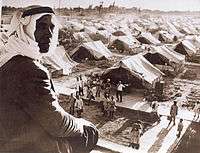Deir Yassin massacre
The Deir Yassin massacre took place on April 9, 1948, when around 120 fighters from the Far-right wing Zionist paramilitary groups Irgun and Lehi killed at least 107 Palestinian Arabs in Deir Yassin, a village of roughly 600 people near Jerusalem. The assault occurred as Jewish militia sought to relieve the blockade of Jerusalem during the civil war that preceded the end of British rule in Palestine.[1]

| Deir Yassin massacre | |
|---|---|
| Part of 1947–48 Civil War in Mandatory Palestine and the 1948 Palestinian exodus | |
.jpg) Deir Yassin today, part of the Kfar Shaul Mental Health Center, an Israeli psychiatric hospital | |
| Location | Deir Yassin, Mandatory Palestine (now Israel) |
| Date | April 9, 1948 |
| Target | Arab villagers |
| Weapons | Firearms and grenades |
| Deaths | Disputed: ≥107 Palestinian Arab villagers and 4 Jewish militiamen |
| Injured | 12 villagers and 35 Jewish militiamen |
| Perpetrators | Irgun and Lehi |
No. of participants | Around 120 Jewish militiamen |
| Defenders | Villagers |
According to Irgun sources, the village guards felt surprised by "the Jews" entering their village at night and opened fire on the Irgun force.[2] The village fell after fierce house-to-house fighting. During and after the battle for the village, at least 107 Palestinians were killed, including women and children—some were shot, while others died when hand grenades were thrown into their homes.[3] Despite an original boast by the victors that 254 had been killed, Aref al-Aref counted 117 victims, seven in combat and the rest in their homes.[4] According to a count conducted by International Red Cross representative Jacques de Reynier, apart from bodies left lying in the streets, 150 corpses were found in one cistern alone, among them people who had been either decapitated or disemboweled.[5] Israeli historian Benny Morris wrote that there were also cases of mutilation and rape.[6] Several villagers were taken prisoner and may have been killed after being paraded through the streets of West Jerusalem.[7] Four of the attackers were killed, with around 35 injured.[8]
The killings were condemned by the leadership of the Haganah—the Jewish community's main paramilitary force—, by the area's two chief rabbis and famous Jews abroad like Albert Einstein, Jessurun Cardozo, Hannah Arendt, Sidney Hook and many others. The Jewish Agency for Israel sent Jordan's King Abdullah a letter of apology, which he rebuffed.[1] Abdullah held the Jewish Agency responsible for the massacre because they were the head of Jewish affairs in Palestine,[9] and warned about "terrible consequences" if similar incidents occurred.[10]
The deaths became a pivotal event in the Arab–Israeli conflict for their demographic and military consequences. The narrative was embellished and used by various parties to attack each other—by the Palestinians against Israel; by the Haganah to play down their own role in the affair; and by the Israeli left to accuse the Irgun and Lehi of blackening Israel's name by violating the Jewish principle of purity of arms.[11] News of the killings sparked terror among Palestinians, encouraging them to flee from their towns and villages in the face of Jewish troop advances and it strengthened the resolve of Arab governments to intervene, which they did five weeks later.[1] Four days after the Deir Yassin massacre, on April 13, a revenge attack on the Hadassah medical convoy in Jerusalem ended in a massacre killing 78 Jews, most of whom were medical staff.[12][13]
Background
Political and military situation
The attack on Deir Yassin took place after the United Nations proposed on November 29, 1947 (UN Resolution 181) that Palestine be divided into an Arab state and a Jewish one. Jerusalem was to belong to neither state, but was to be administered separately; Deir Yassin lay within the boundaries of the proposed plan for Jerusalem. The Arabs rejected the proposal, and civil war broke out.
In the months leading up to the end of British rule, in a phase of the civil war known as "The Battle of [the] Roads", the Arab League-sponsored Arab Liberation Army (ALA)—composed of Palestinians and other Arabs—attacked Jewish traffic on major roads in an effort to isolate the Jewish communities from each other.[14] The ALA managed to seize several strategic vantage points along the highway between Jerusalem and Tel Aviv—Jerusalem's sole supply route and link to the western side of the city (where 16 percent of all Jews in Palestine lived)—and began firing on convoys traveling to the city. By March 1948, the road was cut off and Jerusalem was under siege. In response, the Haganah launched Operation Nachshon to break the siege. On April 6, in an effort to secure strategic positions, the Haganah and its strike force, the Palmach, attacked al-Qastal, a village two kilometers north of Deir Yassin overlooking the Jerusalem-Tel Aviv highway. On April 9, Irgun and Lehi forces attacked nearby Deir Yassin.[15]
Deir Yassin

Deir Yassin was a Palestinian Arab village of several hundred residents, all Muslim, living in 144 houses.[16] The International Committee of the Red Cross reported that there were 400 residents; Yoav Gelber writes that there were 610, citing the British mandatory authority figures; and Menachem Begin's biographer, Eric Silver, 800 to 1,000.[17] It was situated on a hill west of Jerusalem, 800 meters above sea level, overlooking the main highway entering Jerusalem.[18] The village was relatively prosperous, thanks to the excavation of limestone from its quarries, which allowed the residents to make a good living from stone-cutting. By most accounts, they lived in peace with their Jewish neighbors in nearby villages, particularly those in Givat Shaul, an Orthodox community just across the valley, some of whom reportedly tried to help the Deir Yassin villagers during the Irgun-Lehi invasion.[19]
On January 20, 1948, the villagers met leaders of the Givat Shaul community to form a peace pact. The Deir Yassin villagers agreed to inform Givat Shaul should Palestinian militiamen appear in the village, by hanging out certain types of laundry during the day—two white pieces with a black piece in the middle—and at night signaling three dots with a flashlight and placing three lanterns in a certain place. In return, patrols from Givat Shaul guaranteed safe passage to Deir Yassin residents, in vehicles or on foot, passing through their neighborhood on the way to Jerusalem.[20] Yoma Ben-Sasson, Haganah commander in Givat Shaul, said after the village had been captured that, "there was not even one incident between Deir Yassin and the Jews."[21]
Arab militia
Arab militiamen had tried to set up camp in the village, leading to a firefight that saw one villager killed. Just before January 28, Abd al Qadir had arrived with 400 men and tried to recruit some villagers, but the elders voiced their opposition and the men moved on. The leader of the village, the mukhtar, was summoned to Jerusalem to explain to the Arab Higher Committee (AHC), the Palestinian Arab leadership, what the village's relationship was with the Jews: he told them the villagers and the Jews lived in peace. No steps were taken against him, and he was not asked to cancel the peace pact.[22] On February 13, an armed gang of Arabs arrived to attack Givat Shaul, but the Deir Yassin villagers saw them off, the result of which was that the gang killed all the village's sheep. On March 16, the AHC sent a delegation to the village to request that it host a group of Iraqi and Syrian irregulars to guard it. The villagers said no then, and again on April 4,[23] though Irgun fighters said they did encounter at least two foreign militiamen during the April 9 invasion.[24]
Yehuda Lapidot, the Irgun's second-in-command of the operation to take the village, described occasional skirmishes between Deir Yassin and Givat Shaul residents, that on April 3, shots had been fired from Deir Yassin toward the Jewish villages of Bet Hakerem and Yefe Nof, and wrote that the village was defended by 100 armed men, that ditches had been dug around it, that Iraqi and Palestinian guerrillas were stationed there, and that there was a guard force stationed by the village entrance.[24] Benny Morris writes that it is possible some militiamen were stationed in the village, but the evidence is far from definitive, in his view.[25] In Gelber's view, it is unlikely that the peace pact between Deir Yassin and Givat Shaul continued to hold in April, given the intensity of hostilities between the Arab and Jewish communities elsewhere. He writes that shots had been exchanged on April 2 between Deir Yassin and several Jewish communities. Over the next few days, the Jewish community at Motza and Jewish traffic on the road to Tel Aviv came under fire from the village. On April 8, Deir Yassin youth took part in the defence of the Arab village of al-Qastal, which the Jews had invaded days earlier: the names of several Deir Yassin residents appeared on a list of wounded compiled by the British Palestine police.[26]
Irgun and Lehi militia
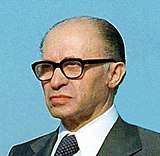
The Jewish forces that entered Deir Yassin belonged in the main to two extremist, underground, paramilitary groups, the Irgun (Etzel) (National Military Organization) and the Lehi (Fighters for the Freedom of Israel), also known as the Stern Gang, both aligned with the right-wing revisionist Zionist movement. Formed in 1931, Irgun was a militant group that broke away from the mainstream Jewish militia, the Haganah. During the 1936–39 Arab revolt in Palestine, in which Palestinian Arabs rose up against the British mandate authorities in protest at mass Jewish immigration into the country, Irgun's tactics had included bus and marketplace bombings, condemned by both the British and the Jewish Agency. Lehi, an Irgun splinter group, was formed in 1940 following Irgun's decision to declare a truce with the British during World War II. Lehi subsequently carried out a series of assassinations designed to force the British out of Palestine. In April 1948, it was estimated that the Irgun had 300 fighters in Jerusalem, and Lehi around 100.[27]
The Palmach, the strike force of the Haganah—whose leadership was aligned with the political left (see Mapai)—also took part, though to a lesser extent. Morris writes that two Palmach squads evacuated the wounded, and helped invade and secure some of the villagers' houses. When the Irgun and Lehi fighters ran low on ammunition, they obtained thousands of rounds from the Haganah. Haganah squads also provided covering fire, and fired on villagers fleeing south towards Ayn Karim.[28]
Battle plans
Decision to attack
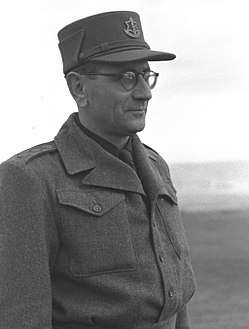
The attack on the village was important for two reasons, according to Yehuda Lapidot of the Irgun. In the view of Irgun and Lehi, it posed a threat to Jewish neighborhoods and the main road to the coastal plain, and it was the first time Jewish forces had gone on the offensive, as opposed to responding to attacks. An assault on the village would show the Arabs that the Jews intended to fight for Jerusalem.[24]
Eric Silver writes that Irgun and Lehi commanders approached David Shaltiel, the Haganah commander in Jerusalem, for approval. He was initially reluctant, because the villagers had signed a non-aggression pact, and suggested attacking Ein Karem instead. The Lehi and Irgun commanders complained that this would be too hard for them. Shaltiel ultimately yielded, on condition that the attackers remain in the village rather than leaving it empty, to prevent it becoming an Arab military base.[30] His approval met with resistance. Meir Pa'il, an intelligence officer with the Palmach, the Haganah's strike force, objected to violating the peace pact with the village, but Shaltiel maintained that he had no power to stop them. Pa'il said in 1998 that Yitzchak Levi, head of Haganah intelligence in Jerusalem, had proposed the inhabitants be notified, but Shaltiel had refused to endanger the operation by warning them.[31]
According to Morris, it was agreed during planning meetings that the residents would be expelled. Lehi further proposed that any villagers who failed to flee should be killed to terrify the rest of the country's Arabs. Most of the fighters at the meetings, from both the Irgun and Lehi, favored killing the male villagers, but the Irgun high command, including Menachem Begin, objected. According to Lapidot, the troops were specifically ordered not to kill women, children, or prisoners.[25]
Pre-attack briefing
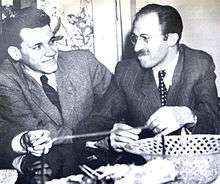
According to the Haganah, the attack force consisted of about 120 men—80 from the Irgun and 40 from Lehi.[32] They met for briefings on April 8, a few hours before the attack began. Lehi would stage its attack from Givat Shaul, and the Irgun from Beit HaKerem. Lapidot writes that the mood at the Irgun meeting was festive. It was the first time a large number of underground fighters had met openly, and the collaboration between the groups increased their sense of solidarity. They chose a password to reflect the mood, "Ahdut Lohemet" ("Fighters' Solidarity"). This was the phrase that would signal the start of the attack. According to Lapidot, Mordechai Raanan, the Irgun district commander in Jerusalem, stressed that women, children, and the elderly must not be harmed, and that the villagers were to be warned by loudspeaker to give them a chance to escape. The road to Ayn Karim would be left open so they could head there.[24]
The attack
Invasion
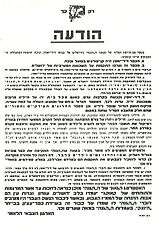
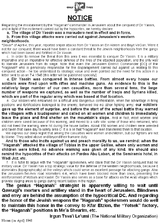
After the briefing, the fighters were driven to their assigned positions. Despite their confidence, the fighters were by all accounts ill-prepared, untrained, and inexperienced.[28]
The Irgun force approached Deir Yassin from the east and south, and arrived at the edge of the village at about 4:30 AM. The Lehi force was supposed to be taking their positions around the village at the same time, but were in fact late. The Irgun commanders had no way to contact them, and had to assume they were on schedule. Fighting began at 04:45 when a village sentry spotted them moving in, and called out in Arabic, "Mahmoud". One of the Irgun fighters thought he had said "Ahdut", part of the password. He responded with the second half of the password, "Lohemet". According to the Irgun commander the Arabs shouted "Yahud" (Jews) and opened fire.[2] A fierce gunbattle then broke out. The Irgun force came under fire from a three-man village guard in a concrete pillbox, and from houses in the village as residents scrambled for their rifles to join the battle, firing out of windows. The Irgun men replied with withering fire towards the pillbox and into the village. When the Lehi force, which was late, finally arrived at the other end of the village to begin the attack, the fighting was already underway. The Lehi force was spearheaded by an armored car with a loudspeaker. The plan was to drive the car into the center of the village and blare a warning through urging the residents to run towards Ein Karim. Instead, the car plunged into a homemade tank trap directly in front of the village, and as it struggled to get out, the Arabs opened fire on it. The loudspeaker activated, but was largely obscured due to the sounds of heavy gunfire, though Abu Mahmoud, a villager, told the BBC in 1998 that he did hear the warning.[34][35]
Irgun and Lehi commanders had believed the residents would flee, but the fighters encountered resistance. The residents did not realize that the point of the attack was conquest, thinking it was just a raid, and failed to run while they had the chance.[36] The villagers' sniper fire from higher positions in the west, especially from the mukhtar's house, effectively contained the attack. Some Lehi units went for help from the Haganah's Camp Schneller in Jerusalem.[37] The men had no experience of attacking an Arab village in daylight, and lacked support weapons. Following an order from Benzion Cohen, the Irgun commander, they resorted to house-to-house attacks, throwing grenades into every house before charging in and spraying the rooms with automatic fire.[38]
The Lehi forces slowly advanced, engaging in fierce house-to-house fighting. In addition to fierce Arab resistance, they also faced other problems; weapons failed to work, a few tossed hand grenades without pulling the pin, and a Lehi unit commander, Amos Kenan, was wounded by his own men.[39] Ezra Yachin of Lehi recalled, "To take a house, you had either to throw a grenade or shoot your way into it. If you were foolish enough to open doors, you got shot down—sometimes by men dressed up as women, shooting out at you in a second of surprise."[40] Meanwhile, the Irgun force on the other side of the village was also having a difficult time. When the Irgun commander Benzion Cohen was wounded, his place was taken by Yehuda Lapidot. It took about two hours of fierce house-to-house fighting to reach the center of the village.[35] By 7:00 a.m., discouraged by the heavy Arab fire and their own increasing casualties, Irgun commanders relayed a message to the Lehi camp that they were considering retreating. Lehi commanders relayed back that they had already entered the village and expected victory soon. The large number of Jewish wounded was a problem. A Magen David Adom station was called for an ambulance. The fighters took beds out of the houses, and doors off their hinges, laid the wounded on them, and ordered Arab women and old men to carry the injured to the ambulance. According to an Irgun participant, many of the stretcher bearers were hit by Arab fire.[41]
Lapidot sent word to Mordechai Raanan, who was watching the progress from Givat Shaul, to send explosives. Soon afterward, Raanan and his aides appeared with knapsacks filled with TNT. The Irgun fighters were then instructed to dynamite houses as they advanced. Under heavy covering fire, the dynamite teams advanced and set charges to houses. In certain instances, the force of the explosions destroyed entire parts of houses, burying the Arab fighters and civilians inside them. A total of 15 houses were blown up.[35] In the afternoon, a Palmach unit from the Haganah arrived with two armored vehicles and two two-inch mortars.[42] The mortar was fired three times at the mukhtar's house, which stopped the sniper fire. According to one Palmach participant, "six of us went house to house, throwing grenades and bursting in."[42] Lehi officer David Gottlieb said the Palmach had accomplished "in one hour what we could not accomplish in several hours".[43]
The killing and the aftermath
Numbers killed
The fighting was over by about 11:00 am. Jacques de Reynier, head of the International Committee of the Red Cross delegation in Palestine, visited Deir Yassin on April 11, 1948, and observed "a total of more than 200 dead, men, women, and children".[44] Mordechai Ranaan, Irgun's district commander in Jerusalem, gave a news conference at Givat Shaul at which he claimed 240 were killed. This story was repeated by the BBC and the Hebrew news services. The New York Times, April 13, 1948, reported that 254 Arabs were killed at Deir Yassin.[45] Sharif Kan'ana of Bir Zeit University interviewed survivors and published figures in 1988: 107 villagers had died, 11 of them armed, with 12 wounded.[46] An Irgun fighter testified years later that Irgun and Lehi men had killed 80 prisoners after the fighting was over. Gelber writes that the figure is inflated and has not been corroborated. Kan'ana writes that 25 villagers were executed and thrown into the quarry after the battle, which Gelber regards as accurate.[47] Israeli researcher Eliezer Tauber writes that a total of 101 people were killed, 61 definitely in combat circumstances (including 24 armed fighters, with the remained being their family members who were with them); 18 for whom the cause of death could not be determined; about 10 whose deaths are in a "grey zone" whose charactization can be debated; and a further 11 being members of a single family who were gunned down by a single Irgun member.[48]
Meir Pa'il account
Morris writes that the Irgun and Lehi troops began pillaging the houses and corpses, stealing money and jewelry from the survivors, and burning corpses.[28] Morris also wrote that there were cases of mutilation and rape.[6] Many of the eyewitness accounts come from Haganah officers. Eliahu Arbel, Operations Officer B of the Haganah's Etzioni Brigade, arrived at the scene on April 10. "I have seen a great deal of war," he said years later, "but I never saw a sight like Deir Yassin."[49] Morris writes that the most detailed report comes from Meir Pa'il, a Palmach intelligence officer who said he visited the village on April 9 to observe the operation on behalf of the Haganah:
The dissidents [Irgun and Lehi] were going about the village robbing and stealing everything: Chickens, radio sets, sugar, money, gold and more ... Each dissident walked about the village dirty with blood and proud of the number of persons he had killed. Their lack of education and intelligence as compared to our soldiers [i.e., the Haganah] was apparent... In one of the houses at the centre of the village were assembled some 200 women and small children. The women sat quietly and didn't utter a word. When I arrived, the "commander" explained that they intended to kill all of them. [But] in the evening I heard that the women and children had been transported and released in Musrara.[50]
Pa'il writes that the Haredi people of Givat Shaul came to help the villagers at around 2 p.m., and were able to stop the killing:[51]
[A] crowd of people from Givat Shaul, with peyot (earlocks), most of them religious, came into the village and started yelling "gazlanim" "rotzchim"—(thieves, murderers) "we had an agreement with this village. It was quiet. Why are you murdering them?" They were Chareidi (ultra-orthodox) Jews. This is one of the nicest things I can say about Hareidi [sic] Jews. These people from Givat Shaul gradually approached and entered the village, and the Lehi and Irgun people had no choice, they had to stop. It was about 2:00 or 3:00 PM. Then the Lehi and Irgun gathered about 250 people, most of them women, children and elderly people in a school house. Later the building became a "Beit Habad"—"Habad House". They were debating what to do with them. There was a great deal of yelling. The dissidents were yelling "Let's blow up the schoolhouse with everyone in it" and the Givat Shaul people were yelling "thieves and murderers—don't do it" and so on. Finally they put the prisoners from the schoolhouse on four trucks and drove them to the Arab quarter of Jerusalem near the Damascus gate. I left after the fourth truck went out.
It was Friday afternoon. It must have been about 4:00–5:00 P.M because the religious people had begun leaving to prepare for the Sabbath.[19]
Israeli military historian Uri Milstein wrote in 1998 that Pa'il was not in Deir Yassin on April 9. Milstein said there were contradictions in Pa'il's claims and an absence of any mention of Pa'il in other Haganah accounts of the incident. All Irgun and Lehi veterans Milstein interviewed denied having seen Pa'il in Deir Yassin, and the Lehi intelligence officer who Pa'il claimed invited him to Deir Yassin denied having done so. In addition, Haganah members who were in the area (including the deputy commander of the Palmach force that took part in the attack), some of whom personally knew Pa'il and were specifically mentioned in his account, denied having seen him there. Milstein argues that there was no organized massacre, though according to Morris[50] he acknowledges that whole families were gunned down during the fighting. According to Milstein, Pa'il said he despised the "dissidents" of the Irgun and Lehi, thus giving him a political motive to submit a falsified report. Milstein also wrote that Haganah intelligence reports on the incident were doctored by the authors or their superiors to discredit the Irgun and Lehi because of political in-fighting within the Jewish community.[52] Morris challenges Milstein's version that Pa'il was not at Deir Yassin that day with his observation that part of Pa’il’s report, that he saw the bodies of five Arabs in a quarry, "is apparently reinforced by a report by two Jewish doctors, who also report having found five male bodies in a house by the village quarry".[50] In a presentation to the PEACE Middle East Dialog Group, Ami Isseroff, translator of Milstein's book into English, provided side-notes critical of many aspects of Milstein's work,[53] including much of his information about Pa'il and also about the incompleteness of his sources - "Both Milstein and Yitzhak Levi leave out key testimony by Yehoshua Gorodenchik, from the Jabotinsky archives, in which he admits that Irgun troops murdered about 80 prisoners – mostly men - corresponding to accounts of refugees."
Villagers taken to Jerusalem, possibly killed
Morris writes that the Irgun and Lehi troops loaded some survivors, including women and children, onto trucks, and drove them through the streets of West Jerusalem, where they were jeered, spat at, and stoned.[28] Harry Levin, a Haganah broadcaster, reported seeing "three trucks driving slowly up and down King George V Avenue bearing men, women, and children, their hands above their heads, guarded by Jews armed with sten-guns and rifles."[54] Contrary to Pa'il's account that people from Givat Shaul had helped the prisoners, Mordechai Gichon of the Haganah wrote on April 10 that they had taken part in the torture of prisoners, referring to their being kicked and shoved with rifle butts.[55]
Pi'al reported to Haganah intelligence on April 10 that he saw five Arab men being paraded through the streets, and later saw their bodies in a quarry near Givat Shaul. Morris writes that this is supported by a report from Dr. Z. Avigdori, the chairman of the Jerusalem branch of the Palestine Physicians Association, and his deputy, Dr. A. Druyan, who were sent by the Jewish Agency to examine the scene on April 12. They walked from house to house, counting and examining corpses. Their report said they found 46 corpses. The cause of death had been injuries from bullets or bombs, and that "all the bodies were dressed in their own clothes, limbs were whole and we saw no signs of mutilation." They also said they found five male bodies in a house by the village quarry.[56]
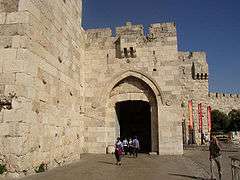
Mordechai Gihon, a Haganah intelligence (HIS) officer in Jerusalem, reported on April 10 seeing people carry bodies to the quarry east of Deir Yassin: "We entered the village around 3:00 in the afternoon [of April 9] ... In the village there were tens of bodies. The dissidents got them out of the roads. I told them not to throw the bodies into cisterns and caves, because that was the first place that would be checked...." He described beatings, looting, and the stripping of jewelry and money from prisoners. He wrote that the initial orders were to take the men prisoner and send the women and children away, but the order was changed to kill all the prisoners. The mukhtar's son was killed in front of his mother and sisters, he said.[57]
The head of the HIS in Jerusalem, Yitzhak Levy, wrote in reports dated April 12 and 13: "The conquest of the village was carried out with great brutality, whole families [including] women, old people and children were killed and there are piles and piles of dead."[28] He wrote that a mother and child who had been moved from Deir Yassin to Sheikh Badr were killed there by Lehi fighters. Seven old men and women, who had been taken to Jerusalem, were taken back to Deir Yassin and killed in the quarry there, he wrote, and an Arab man, believed to be a sniper, was killed and his corpse burned in front of foreign journalists.[28]
Fifty-five children from the village whose parents had been killed were taken to the Jaffa Gate in Jerusalem's Old City, and left there. They were found by a Palestinian woman, Hind Husseini, a member of the prominent Palestinian Husseini family. She at first rented two rooms for them, bringing them food every day, before moving them to the Sahyoun convent. In July, she moved them again, this time to her family home, a large house her grandfather had built in Jerusalem in 1891. She renamed the house Dar Al-Tifl Al-Arabi (Arab Children's House), and set up a foundation to finance it. The orphanage continues to this day.[58]
Irgun–Lehi press conference
On the evening of April 9, the fighters invited American journalists to a house in Givat Shaul, where they served tea and cookies while explaining the attacks. A spokesman said he regretted the casualties among the women and children, but they were inevitable because every house had to be reduced by force.[59] Ten houses had been blown up entirely, he said, though Yoav Gelber writes that this is untrue; he says the Irgun and Lehi forces had not been carrying explosives.[36] Other houses had their doors blown off and hand grenades thrown inside.[59] Morris writes that the killing continued after April 9. Several residents who had either hidden or pretended to have died were apparently killed by Lehi men on April 10 or 11.[55]
Haganah and Palestine Police Force reports
A number of sources alleged there had been instances of rape. Yitzhak Levy, head of Haganah Intelligence, wrote on April 13: "LHI [Lehi] members tell of the barbaric behavior of the IZL [Irgun] toward the prisoners and the dead. They also relate that the IZL men raped a number of Arab girls and murdered them afterward...." [60] Levy went on to say that he was not certain the allegations were true.[60] The main source of the rape allegations was Assistant Inspector-General Richard Catling of the British Palestine Police Force. He wrote one or more reports based on interviews he conducted in Silwan with some of the Deir Yassin women:
On 14th April at 10 a.m. I visited Silwan village accompanied by a doctor and a nurse from the Government Hospital in Jerusalem and a member of the Arab Women's Union. We visited many houses in this village in which approximately some two to three hundred people from Deir Yassin village are housed. I interviewed many of the women folk in order to glean some information on any atrocities committed in Deir Yassin but the majority of those women are very shy and reluctant to relate their experiences especially in matters concerning sexual assault and they need great coaxing before they will divulge any information. The recording of statements is hampered also by the hysterical state of the women who often break down many times whilst the statement is being recorded. There is, however, no doubt that many sexual atrocities were committed by the attacking Jews. Many young schoolgirls were raped and later slaughtered. Old women were also molested. One story is current concerning a case in which a young girl was literally torn in two. Many infants were also butchered and killed. I also saw one old woman who gave her age as one hundred and four who had been severely beaten about the head with rifle butts. Women had bracelets torn from their arms and rings from their fingers and parts of some of the women's ears were severed in order to remove earrings.[61]
Yoav Gelber writes that Catling was "an old and bitter enemy" of the Irgun and Lehi. The whereabouts of his original reports are unknown, and writers refer to them only indirectly, citing Dominique Lapierre and Larry Collins's book O Jerusalem (1972) as their source. Lapierre and Collins write that copies of three of Catling's reports were in their possession when they wrote the book.[62]
Red Cross visit
Jacques de Reynier, head of the International Committee of the Red Cross delegation in Palestine, and his assistant Dr. Alfred Engel, visited Deir Yassin on April 11. In his personal memoirs, published in 1950, Reynier wrote: "a total of more than 200 dead, men, women, and children. About 150 cadavers have not been preserved inside the village in view of the danger represented by the bodies' decomposition. They have been gathered, transported some distance, and placed in a large trough (I have not been able to establish if this is a pit, a grain silo, or a large natural excavation). ... [One body was] a woman who must have been eight months pregnant, hit in the stomach, with powder burns on her dress indicating she'd been shot point-blank."[44] He wrote that he had encountered a "cleaning-up team" when he arrived the village.
The gang [the Irgun detachment] was wearing country uniforms with helmets. All of them were young, some even adolescents, men and women, armed to the teeth: revolvers, machine-guns, hand grenades, and also cutlasses in their hands, most of them still blood-stained. A beautiful young girl, with criminal eyes, showed me hers still dripping with blood; she displayed it like a trophy. This was the "cleaning up" team, that was obviously performing its task very conscientiously.
I tried to go into a house. A dozen soldiers surrounded me, their machine-guns aimed at my body, and their officer forbade me to move ... I then flew into one of the most towering rages of my life, telling these criminals what I thought of their conduct, threatening them with everything I could think of, and then pushed them aside and went into the house
...I found some bodies, cold. Here the "cleaning up" had been done with machine-guns, then hand grenades. It had been finished off with knives, anyone could see that ... as I was about to leave, I heard something like a sigh. I looked everywhere, turned over all the bodies, and eventually found a little foot, still warm. It was a little girl of ten, mutilated by a hand grenade, but still alive ...[44]
After his inspection, the Irgun asked him to sign a document to say he had been received courteously and thanking them for their help. When he refused, they told him he would sign it if he valued his life. "The only course open to me was to convince them that I did not value my life in the least," he wrote.[44]
Menachem Begin hailed the taking of Deir Yassin as a “splendid act of conquest" that would serve as a model for the future: in a note to his commanders he wrote: 'Tell the soldiers: you have made history in Israel with your attack and your conquest. Continue thus until victory. As in Deir Yassin, so everywhere, we will attack and smite the enemy. God, God, Thou has chosen us for conquest.'[63]
Reaction
Appeals to the British
The Arab emergency committee in Jerusalem learned of the attack around nine in the morning of April 9, including reports about the killing of women and children. They requested the help of the British, but did nothing further. In the late afternoon, they started to hear reports of women and children being paraded through the streets of Jerusalem. They sent the prisoners food and again appealed to the British army to intervene, to no avail.[36] Gelber writes that the British were not keen to take on the Irgun and Lehi, who would have fought back if attacked, unlike the Haganah. High Commissioner Sir Alan Cunningham urged that troops be sent to Deir Yassin, but Lieutenant General Sir Gordon MacMillan, General Officer Commanding (GOC) of the British Forces in Palestine and Trans-Jordan, said he would risk British lives only for British interests. The RAF commanding officer offered to fire rockets on the Jewish forces in the village, but the light bombers had been sent to Egypt and the rockets to Iraq.[64] Cunningham later said the RAF had brought a squadron of Tempest aircraft from Iraq to bomb the village, but he cancelled the operation when he learned the Haganah had arrived there and had garrisoned it.[65]
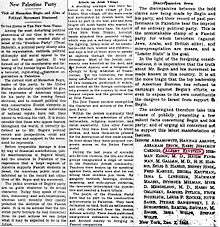
Propaganda
The Jordanian newspaper Al Urdun published a survivor's account in 1955, which said the Palestinians had deliberately exaggerated stories about atrocities in Deir Yassin to encourage others to fight, stories that had caused them to flee instead. Everyone had reason to spread the atrocity narrative. The Irgun and Lehi wanted to frighten Arabs into fleeing; the Arabs wanted to provoke an international response; the Haganah wanted to tarnish the Irgun and Lehi; and the Arabs and the British wanted to malign the Jews.[66] In addition, Milstein writes, the left-wing Mapai party and David Ben-Gurion, who became Israel's first prime minister on May 14, exploited Deir Yassin to stop a power-sharing agreement with the right-wing Revisionists—who were associated with Irgun and Lehi—a proposal that was being debated at the time in Tel Aviv.[67] Mordechai Ra'anan, the Irgun commander in Jerusalem, told reporters on April 10 that 254 Arab bodies had been counted, a figure published by The New York Times on April 13.[68] In 1987, in a study, Sharif Kan'ana of Bir Zeit University concluded by interviewing survivors that 107 had died, with 12 wounded.[46]
Hazem Nuseibeh, the news editor of the Palestine Broadcasting Service at the time of the attack, gave an interview to the BBC in 1998. He spoke about a discussion he had with Hussayn Khalidi, the deputy chairman of the Higher Arab Executive in Jerusalem, shortly after the killings: "I asked Dr. Khalidi how we should cover the story. He said, 'We must make the most of this.' So he wrote a press release, stating that at Deir Yassin, children were murdered, pregnant women were raped, all sorts of atrocities."[69] Gelber writes that Khalidi told journalists on April 11 that the village's dead included 25 pregnant women, 52 mothers of babies, and 60 girls.[70]
The stories of rape angered the villagers, who complained to the Arab emergency committee that their wives and daughters were being exploited in the service of propaganda.[71] Abu Mahmud, who lived in Deir Yassin in 1948, was one of those who complained. He told the BBC: "We said, 'There was no rape.' He [Hussayn Khalidi] said, 'We have to say this so the Arab armies will come to liberate Palestine from the Jews.'"[69] "This was our biggest mistake," said Nusseibeh. "We did not realize how our people would react. As soon as they heard that women had been raped at Deir Yassin, Palestinians fled in terror. They ran away from all our villages."[69] He told Larry Collins in 1968: "We committed a fatal error, and set the stage for the refugee problem."[72] A villager known as Haj Ayish stated "there had been no rape." He questioned the accuracy of the Arab radio broadcasts that "talked of women being killed and raped", and instead believed that "most of those who were killed were among the fighters and the women and children who helped the fighters."[73] Mohammed Radwan, one of the villagers who fought the attackers, said: "There were no rapes. It's all lies. There were no pregnant women who were slit open. It was propaganda that ... Arabs put out so Arab armies would invade. They ended up expelling people from all of Palestine on the rumor of Deir Yassin."[74] Radwan added "I know when I speak that God is up there and God knows the truth and God will not forgive the liars."[74] Historian Abdel Jawad states that women at Deir Yassin spoke to British interrogators about rapes occurring and their opinion that this was the worst thing that happened. He states that it was something that could not be discussed in their society and was never talked of by the men.[75] Citing Hasso (2000:495) Isabelle Humphries and Laleh Khalili note that in Palestine men's honour was tied to "the maintenance of kin women's virginity (when unmarried) or exclusive sexual availability (when married)", and that this culture led to the suppression of the narratives of rape victims.[76]
In 1969, the Israeli Foreign Ministry published an English pamphlet "Background Notes on Current Themes: Deir Yassin" denying that there had been a massacre at Deir Yassin, that the village was the home of an Iraqi garrison, and calling the massacre story "part of a package of fairy tales, for export and home consumption".[77] The pamphlet led to a series of derivative articles giving the same message, mostly outside Israel.[77] Menachem Begin's Herut party disseminated a Hebrew translation in Israel, causing a widespread but largely non-public debate within the Israeli establishment.[77] Several former leaders of the Haganah demanded that the pamphlet be withdrawn on account of its inaccuracy, but the Foreign Ministry explained that "While our intention and desire is to maintain accuracy in our information, we sometimes are forced to deviate from this principle when we have no choice or alternative means to rebuff a propaganda assault or Arab psychological warfare."[77] Yitzhak Levi, the 1948 leader of Hagana Intelligence, wrote to Begin: "On behalf of the truth and the purity of arms of the Jewish soldier in the War of Independence, I see it as my duty to warn you against continuing to spread this untrue version about what happened in Deir Yassin to the Israeli public. Otherwise there will be no avoiding raising the matter publicly and you will be responsible."[77] Eventually, the Foreign Ministry agreed to stop distributing the pamphlet, but it remains the source of many popular accounts.[77]
Exodus and invasion
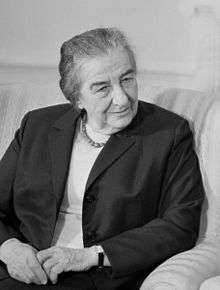
Maxime Rodinson argued that the massacre at Deir Yassin, and the fear of further terrorism that it inspired in the Palestinian population, was a major cause of the subsequent Palestinian flight.[78] Mapam's leaders later concluded that the fall of Deir Yassin and Haifa were the two pivotal events of the Palestinian exodus. On April 14, Irgun radio broadcast that villages around Deir Yassin and elsewhere were being evacuated. HIS intelligence reported that the residents of Beit Iksa and Al Maliha had fled. The village of Fureidis appealed for arms. The villages of Fajja and Mansura reached a peace agreement with their Jewish neighbors. Arabs fled from Haifa and Khirbet Azzun. A Haganah attack on Saris encountered no resistance, because of the fear of Deir Yassin, in the view of the British.[79] Menachem Begin, leader of the Irgun at the time of the attack, though not present at the village, wrote in 1977:
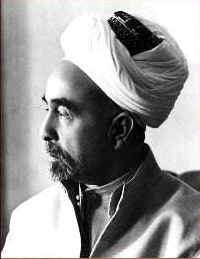
The enemy propaganda was designed to besmirch our name. In the result it helped us. Panic overwhelmed the Arabs of Eretz Israel. Kolonia village, which had previously repulsed every attack of the Haganah, was evacuated overnight and fell without further fighting. Beit-Iksa was also evacuated. These two places overlooked the main road; and their fall, together with the capture of al-Qastal by the Haganah, made it possible to keep open the road to Jerusalem. In the rest of the country, too, the Arabs began to flee in terror, even before they clashed with Jewish forces. Not what happened at Deir Yassin, but what was invented about Deir Yassin, helped to carve the way to our decisive victories on the battlefield ... The legend was worth half a dozen battalions to the forces of Israel.[80]
The Deir Yassin attack, along with attacks on Tiberias, Haifa, and Jaffa, put pressure on Arab governments to invade Palestine. News of the killings had aroused public anger in the Arab world, which the governments felt unable to ignore.[79] Syria's foreign minister remarked that the Arab public's desire for war was irresistible. The arrival of tens of thousands of refugees further convinced them to act. A consensus favoring invasion began to emerge the day after Deir Yassin, at a meeting on April 10 in Cairo of the Arab League Political Committee.[81] Golda Meir, disguised in an Arab robe, met king Abdullah in Amman on May 10–11, the second such meeting between them. During their first, Abdullah had agreed to a partition of Palestine to include a Jewish state. Now, he retracted, suggesting instead a Jewish canton within a Hashemite kingdom. Deir Yassin had changed things, he said. Meir reported later that Abdullah was approaching war "as a person who is in a trap and can't get out". The Arab invasion began at midnight on May 14, when Abdullah fired a symbolic shot in the air, and shouted "Forward!"[82]
Deir Yassin today
.jpg)
In 1949, despite protests, the Jerusalem neighborhood of Givat Shaul Bet was built on what had been Deir Yassin's land, now considered part of Har Nof, an Orthodox area.[83] Four Jewish scholars, Martin Buber, Ernst Simon, Werner Senator, and Cecil Roth, wrote to Israel's first prime minister, David Ben-Gurion, asking that Deir Yassin be left uninhabited, or that its settlement be postponed. They wrote that it had become "infamous throughout the Jewish world, the Arab world and the whole world". Settling the land so soon after the killings would amount to an endorsement of them. Ben-Gurion failed to respond, though the correspondents sent him copy after copy. Eventually his secretary replied that he had been too busy to read their letter.[84]
In 1951, the Kfar Shaul Mental Health Center was built on the village itself, using some of the village's abandoned buildings. Currently, many of the remaining buildings, located within the hospital, are hidden behind the hospital's fence, with entry closely restricted.[85] In the 1980s, most of the remaining abandoned parts of the village were bulldozed to make way for new neighborhoods, and most of the Deir Yassin cemetery was bulldozed to make way for a highway. Har HaMenuchot, a Jewish cemetery, lies to the north. To the south is a valley containing part of the Jerusalem Forest, and on the other side of the valley, a mile and a half away, lie Mount Herzl and the Holocaust memorial museum, Yad Vashem.[86] Palestinian historian Walid Khalidi wrote in 1992:
Many of the village houses on the hill are still standing and have been incorporated into an Israeli hospital for the mentally ill that was established on the site. Some houses outside the fence of the hospital grounds are used for residential and commercial purposes, or as warehouses. Outside the fence, there are carob and almond trees and the stumps of olive trees. Several wells are located at the southwestern edge of the site. The old village cemetery, southeast of the site, is unkempt and threatened by debris from a ring road that has been constructed around the village hill. One tall cypress tree still stands at the center of the cemetery.[87]
In 2010, the Supreme Court of Israel rejected a petition by the newspaper Haaretz for the declassification of documents, reports and photographs concerning the Deir Yassin massacre.[88] The court cited the possible damage to Israel's foreign relations and its negotiations with the Palestinians.[88]
See also
- Al-Dawayima massacre
- Blood Libel at Deir Yassin: The Black Book
- Hadassah medical convoy massacre
- Kfar Etzion massacre
- Killings and massacres during the 1948 Palestine War
- List of Arab towns and villages depopulated during the 1948 Palestinian exodus
- List of killings and massacres in Mandatory Palestine
Footnotes
- Morris 2008, pp. 126–128.
- Milstein 1998, p. 358.
- Kana'ana and Zeitawi, The Village of Deir Yassin, Destroyed Village Series, Berzeit University Press, 1988.
- Henry Laurens, La Question de Palestine, Fayard Paris 2007 vol.3 p.75
- Stefan Brooks, 'Deir Yassin Massacre,' in Spencer C. Tucker, Priscilla Roberts (eds.)The Encyclopedia of the Arab-Israeli Conflict: A Political, Social, and Military History, ABC-CLIO, 2008 p.297.
- Morris 1987, p. 113.
- Yavne to HIS-ID, April 12, 1948, IDFA 5254/49//372 in Morris 2008, p. 127.
- Gelber 2006, p. 310.; Morris 2005 says, "a dozen seriously wounded (they later spoke of 30–40 wounded, surely an exaggeration)".
- Morris 2008, p. 127.
- Benny Morris, The Road to Jerusalem: Glubb Pasha, Palestine and the Jews, p. 128.
- Gelber 2006, p. 307.*For "purity of arms", see Walzer, Michael. "War and Peace in the Jewish Tradition", and Nardin, Terry. "The Comparative Ethics of War and Peace", in Nardin, Terry (ed.). The Ethics of War and Peace. Princeton University Press, pp. 107–108, 260.
- Siegel-Itzkovich, Judy (April 7, 2008). "Victims of Hadassah massacre to be memorialized". The Jerusalem Post. Retrieved December 2, 2013.
- Larry Collins and Dominique Lapierre, O Jerusalem!, 1972, pp. 284–285, Simon & Schuster, New York; ISBN 0-671-66241-4
- For Battle of the Roads, see Kagan 1966, p. 52.
- Silver 1984, p. 91.
- Khalidi 1992, p. 290.
- Gelber 2006, p. 309.
- Pappe 2006, p. 90.
- Pa'il and Isseroff 1998.
- Morris 2004, p. 91.
- Also see Gelber 2006, p. 308.
- Milstein 1999, p. 351
- Gelber 2006, p. 308.
- Morris 2004, p. 97.
- Lapidot 1992.
- Morris 2001, p. 207.
- For Begin's opposition to the proposals, see Statement of Yehuda Lapidot [Irgun], Jabotinsky Archives, Tel Aviv, cited in Silver 1984, pp. 90–91.
- Gelber 2006, pp. 308–309.
- Silver 1984, p. 89.
- Morris, Benny (2005). "The Historiography of Deir Yassin". Journal of Israeli History. 24: 79–107. doi:10.1080/13531040500040305.
- Shaltiel 1981, p. 139.
- Silver 1984, pp. 90–91.
- Also see Shaltiel 1981, p. 139.
- Pa'il and Isseroff 1998.
- Khalidi 1992, p. 290.
- The New York Times reported at the time that the force was made up of "45 Irgunists and 45 Sternists" reinforced by 20 men from the Haganah; see Meltzer, July 18, 1948.
- Lapidot 1992.
- Morris 2005.
- For Abu Mahmoud's statement, see BBC 1998.
- Bell, Bowyer J.: Terror out of Zion (1976), ISBN 978-1-56000-870-5
- Gelber 2006, pp. 310–312.
- Milstein 1998, p. 363–364.
- Gelber 2006, p. 310.
- For the reference to Ben Zion Cohen, see BBC 1998.
- McGowan 1998, p. 35ff.
- Banks 1982, p. 62.
- Milstein 1998, p. 363.
- Milstein 1998, p. 364.
- Lorch 1981, p. 450.
- Hirst 2003, pp. 252–253.
- Tveit, Odd Karsten (2000) Anna's House. The American Colony in Jerusalem. Rimal. 2011 edition translated by Peter Scott-Hansen. ISBN 978-9963-610-40-2. pp.380,381
- Kan'ana & Zaytuni 1988, pp. 5, 57.
- The findings were published in Arabic as the fourth booklet in the university's "Destroyed Arab Villages" series, part of its Destroyed Palestinian Villages Documentation Project. Yoav Gelber writes that the figures are regarded as authoritative: see Gelber 2006, p. 311.
- Gelber 2006, p. 312.
- Deir Yassin: Sof HaMitus, published 2017. Discussion
- Assad 2010, p. 114.
- Morris 2004, p. 238; also see footnote 564, p. 294.
- Interview with Meir Pa'il, BBC 1998.
- Milstein 1998, pp. 366, 378, 382–388, cited in Morris 2004, footnote 564, p. 294; also in an interview with Morris.
- Ami Isseroff (1991). "Deir Yassin - Uri Milstein's Account - translated by Ami Isseroff". PEACE, a Mid-East Dialogue Group. Archived from the original on June 10, 2017. Retrieved August 12, 2017.
- Levin 1950, p. 57.
- Morris 2004, p. 238.
- Morris 2004, footnote 564, p. 294; see Dr. Z Avigdori and Dr A. Druyan's "Report on Visit to Deir Yassin on 12.4.1948", April 18, 1948. Gelber 2006, p. 314.
- Morris 2005.
- "The Legacy of Hind Husseini", United Nations Relief and Works Agency for Palestine Refugees in the Near East, accessed April 15, 2011.
- Also see Madsen 2003, p. 59ff.
- Schmidt 1948.
- Morris 2004, p. 238, and Morris 2008, p. 127.
- Forwarded to the Chief Secretary of the Palestine government, Sir Henry Gurney, by Richard C. Catling, Assistant Inspector General of the Criminal Investigation Division, on April 13, 14 and 16, 1948, dossier no. 179/110/17/GS, cited in Lapierre and Collins (1972), this edition 2000, Simon & Schuster, footnote, p. 276.
- Lapierre and Collins 2000, footnote, p. 276.
- Gelber 2006, p. 313.
- Lawrence Wright Thirteen Days in September: The Dramatic Story of the Struggle for Peace, Knopf Doubleday Publishing Group, 2014 p.271.
- Gelber 2006, p. 316.
- Gelber 2006, p. 317.
- Morris 2001, p. 209.
- Gelber 2006, p. 315.
- Morris 2001, footnote 208, p. 706.
- Morris 2004, footnote 566, p. 294.
- Also see Morris 2001, p. 209.
- "Interview with Hazam Nusseibeh", Fifty Years' War, BBC, 1998.
- Also see Silver 1998.
- Gelber 2006, p. 315.
- Gelber 2006, p. 314.
- Larry Collins interview with Hazem Nusseibeh, May 1968, Larry Collins papers, Georgetown University library, cited in Morris 2004, footnote 572, p. 295.
- Anton La Guardia (2000). War Without End. Thomas Dunne Books.
- Holmes, Paul (April 6, 1998). "Deir Yassin - a casualty of guns and propaganda". Reuters News.
- Slyomovics, Susan (2007). Nakba: Palestine, 1948, and the Claims of Memory. Columbia University Press. pp. 34–35. ISBN 978-0231135795.
- Khalili, Leleh (2007). Nakba: Palestine, 1948, and the Claims of Memory. Columbia University Press. p. 212. ISBN 978-0231135795.
- Benny Morris (2005). "The Historiography of Deir Yassin". The Journal of Israeli History. 24 (1): 79–107. doi:10.1080/13531040500040305.
- Rodinson, 1968, p. 50 "There were many causes for the Palestinian exodus, the main one being simply that which operated in Spain during the Civil War or in France in 1940: to get away from the theatre of military operations. The fear of Jewish terrorism also played a major part, even though the terror was sporadic and restricted. The massacre of Deir Yassin, despite the condemnation of it by the ruling Jewish bodies, was fearfully active as an act of terror."
- Morris 2004, pp. 239–240.
- Begin 1977, pp. 225–227; footnote to pp. 226–227.
- Morris 2008, pp. 127, 182.
- Morris 2008, p. 193 (for Golda Meir); p. 209 (for Abdullah shouting "forward").
- Segev 1998, p. 87–88.
- Ellis 1999, p. 32; Letter of Buber, Simon, Senator, Roth to David Ben-Gurion, Israel State Archives, Pmo 5559/Gimel.
- Moreno 1959, p. 279; Khalidi 1992, p. 292.
- McGowan 1998
- Khalidi 1992, p. 292.
- Renana Keydar (2012). ""I Was in a War, and in a War Things Like That Happen": On Judgments and Ethical Investigations in Israeli Law and Literature". Jewish Social Studies. 18 (3): 212–224. doi:10.2979/jewisocistud.18.3.212.
References
- Banks, Lynne Reid (1982). A Torn Country: An Oral History of the Israeli War of Independence. New York: Franklin Watts.CS1 maint: ref=harv (link)
- BBC and PBS (1998). "The Arab Israeli Conflict – part 2 : Israeli massacres 1948", The Fifty Years War, accessed August 12, 2010.
- Begin, Menachem (1977): The Revolt. Dell Publishing.
- Collins, Larry and Lapierre, Dominique (1972): O Jerusalem!, Simon and Schuster.
- Eban, Abba (1969). Background Notes on Current Themes – No.6: Dir Yassin. Jerusalem: Ministry for Foreign Affairs, Information Division, March 16, 1969.CS1 maint: ref=harv (link)
- Ellis, Marc H. (1999). O, Jerusalem!: the contested future of the Jewish covenant. Fortress Press. ISBN 0-8006-3159-5, 978-0-8006-3159-8
- Gelber, Yoav (2006). Palestine 1948. "Propaganda as History: What Happened at Deir Yassin?". Sussex Academic Press.
- Hirst, David (2003). The Gun and the Olive Branch. Faber and Faber (first published 1977).
- Holmes, Paul (1998) for Reuters, published in the Middle East Times, April 20, 1998, cited in Comay, Naomi. Arabs speak frankly on the Arab-Israeli conflict. Printing Miracles Limited, 2005, p. 16.
- Kagan, Binyamin (1966). The Secret Battle for Israel. The World Publishing Co.CS1 maint: ref=harv (link)
- Kananah, Sharif and Zaytuni, Nihad (1988). Deir Yassin القرى الفلسطينية المدمرة (Destroyed Palestinian Villages), Birzeit University Press.
- Khalidi, Walid (1992). All That Remains: The Palestinian Villages Occupied and Depopulated by Israel in 1948. Institute for Palestine Studies.CS1 maint: ref=harv (link)
- LaGuardia, Anton (2003). War Without End: Israelis, Palestinians, and the Struggle for a Promised Land. St. Martin's Griffin.CS1 maint: ref=harv (link)
- Lapidot, Yehuda (1992). Besieged, Jerusalem 1948: Memories of an Irgun Fighter. See part II, Jerusalem, for the section on Deir Yassin.
- Levin, Harry (1950). I Saw the Battle of Jerusalem. Schocken Books.CS1 maint: ref=harv (link)
- Lorch, Netanel (1981). The Edge of the Sword. Easton Press.CS1 maint: ref=harv (link)
- Madsen, Ann Nicholls (2003). Making Their Own Peace: Twelve Women of Jerusalem. Lantern Books.CS1 maint: ref=harv (link)
- Martin, Ralph G (1982). Golda: Golda Meir – The Romantic Years. New York: Charles Scribner's Sons.CS1 maint: ref=harv (link)
- Meltzer, Julian Louis (1948). "Jerusalem truce halts Israeli push to retake old city", The New York Times, July 18, 1948.
- McGowan, Daniel and Ellis, Marc. (eds.) (1998). Remembering Deir Yassin: The Future of Israel and Palestine. Interlink Publishing Group.
- Milstein, Uri (1998). History of Israel's War of Independence: Out of Crisis Came Decision. 4. University Press of America.CS1 maint: ref=harv (link)
- Milstein, Uri (1970). Genesis 1948. The New American Library.CS1 maint: ref=harv (link)
- Morris, Benny (2008). 1948: The First Arab-Israeli War. Yale University Press.
- Morris, Benny (2005). "The Historiography of Deir Yassin", Journal of Israeli History, volume 24, issue 1.
- Morris, Benny (2004). The Birth of the Palestinian Refugee Problem Revisited. Cambridge University Press.CS1 maint: ref=harv (link)
- Morris, Benny (2001). Righteous Victims: A History of the Zionist-Arab Conflict, 1881–2001. Vintage Books.CS1 maint: ref=harv (link)
- Morris, Benny (1987). The Birth of the Palestinian Refugee Problem, 1947–1949. Cambridge University Press.CS1 maint: ref=harv (link)
- Pa'il, Meir and Isseroff, Ami (1998). "Meir Pail's Eyewitness Account", October 1, 1998, accessed November 18, 2010.
- Pappe, Ilan (2006). The Ethnic Cleansing of Palestine. Oneworld Publications.CS1 maint: ref=harv (link)
- Reynier, Jacques de (1950). A Jerusalem un Drapeau flottait sur la Ligne de Feu. Editions de la Baconnière, Neuchâtel.CS1 maint: ref=harv (link)
- Rodinson, Maxime (1968). Israel and the Arabs, Penguin Books
- Schmidt, Dana Adams (1948). 200 Arabs killed, stronghold taken, The New York Times, April 9, 1948.
- Segev, Tom (1998). 1949: The First Israelis. Holt Paperbacks.CS1 maint: ref=harv (link)
- Shaltiel, David (1981). Jerusalem 1948 (in Hebrew). Tel Aviv.CS1 maint: ref=harv (link)
- Silver, Eric (1984). Begin: A Biography.CS1 maint: ref=harv (link)
- Silver, Eric (1998). Arab witnesses admit exaggerating Deir Yassin massacre, The Jerusalem Report, April 2, 1998, accessed June 11, 2009.
Further reading
- Al Hayat, April 1998. Articles to commemorate the 50th anniversary (Arabic): April 9, April 9, April 12, April 13, April 14, April 15, accessed April 15, 2011.
- Al-Arif, Arif (1956). Al-Nakba. Beirut.
- Avner, Yehuda. "The Ghosts of Deir Yassin", The Jerusalem Post, April 7, 2007.
- Deir Yassin Remembered. "Deir Yassin Remembered", video showing scenes of the village remains and its cemetery, accessed April 15, 2011.
- Hasso, Frances S. (2000). "Modernity and Gender in Arab Accounts of the 1948 and 1967 Defeats", International Journal of Middle East Studies, 32:491–510.
- Lapidot, Yehuda. "Deir Yassin", IZL (Irgun) website, accessed April 15, 2011.
- Laurens, Henry (2007). La Question de Palestine, vol.3, Fayard, Paris.
- Lockman, Zachary (1996). Comrades and Enemies; Arab and Jewish Workers in Palestine, 1906 - 1948 University of California Press.
- Masalha, Nur (1988). "On Recent Hebrew and Israeli Sources for the Palestinian Exodus, 1947–49", Journal of Palestine Studies, Vol. 18, No. 1, Special Issue: Palestine 1948 Autumn, 1988), pp. 121–137.
- Milstein, Uri (2007). Blood Libel at Deir Yassin: The Black Book (Hebrew: עלילת דם בדיר יאסין – הספר השחור). National Midrasha Publishers and Survival Institute Publishers.
- Milstein, Uri (1989) תולדות מחלמת העצמאות (History of the War of Independence), Zemorah, Bitan. OCLC 21330115
- Milstein, Uri (2012). The Birth of a Palestinian Nation: The Myth of the Deir Yassin Massacre Gefen Publishing House. ISBN 978-965-229-582-8
- Tal, Yerech. "There was no massacre there", Haaretz, September 8, 1991, page B3.
- Rubinstein, Danny. "Indeed there was a massacre there", Haaretz, September 11, 1991.
- Zionist Organization of America. Deir Yassin: History of a Lie, March 9, 1998; also see here, accessed April 15, 2011.
- Zochrot. "Remembering Deir Yassin", YouTube, 2006, accessed April 15, 2011.
- Zogby, James. "Remembering Deir Yassin", originally appeared in Al-Ahram Weekly, accessed June 26, 2016.
External links
- DeirYassin.org Deir Yassin Remembered
- Deir Yassin: My Memories, by Najaf Hirbawi, 1998, The Palestine-Israel Journal
.jpg)
.jpg)
.jpg)
.jpg)
.jpg)
.jpg)
.jpg)
.jpg)
.jpg)
.jpg)
